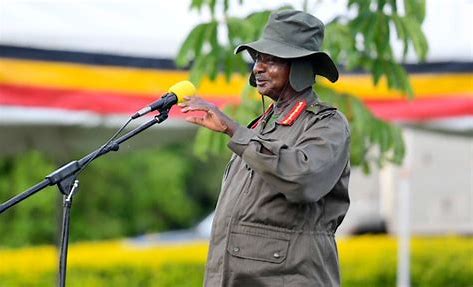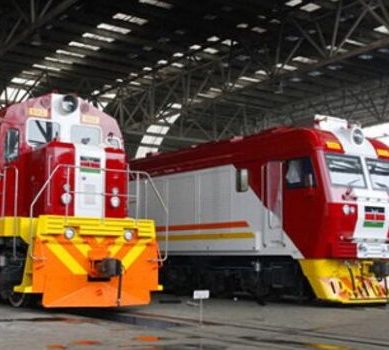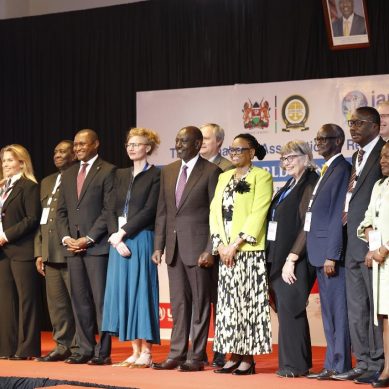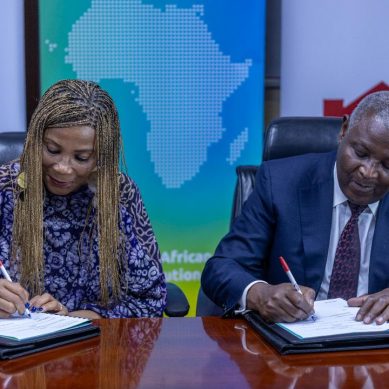
The idea of Integrated Water Resources Management (IWRM), like the idea of Integrated Pest Management (IPM), was conceptualised in the 1970s as a way to improve the growing complexity of water resources supervision and to enhance the participation of civil society, as local communities, community-based organisations (CBOs) and nongovernmental organisations (NGOs), in managing water resources (Both Ends and GETSD, 2011).
That was the time when the idea of integrated knowledge production was also emerging, in Europe mainly. I was introduced to both IWRM and IPM when I joined the University of Dar-es-Salaam, Tanzania, in 1972 for undergraduate studies in zoology, botany and geography with development studies. That academic background was to be pivotal in my higher studies in the field of the biology of conservation at the University of Nairobi, Kenya, from 1980 to 1983 for a masters degree in zoology.
The ideas of IWRM and IPM re-emerged in my academic, intellectual and professional development at the University of Nairobi in the area of environmental management and conservation. However, there was no evidence that the University of Nairobi had accommodated the wind of change in knowledge production in global education, which at that time favoured alternative knowledge production via mainly interdisciplinarity and transdisplinarity.
Although the biology of conservation resourced instructors and/or knowledge workers from across the university curriculum, it was not an integrated programme of study. It is best described as a multidisciplinary programme. It allowed knowledge workers and/or instructors from different disciplines and professions to participate in it, but did not allow for integration and, therefore, did not challenge disciplinarity. To challenge disciplinarity, it should have been interdisciplinary, crossdisciplinary, transdisciplinary or extradisciplinary. It was not surprising that the designers of the biology of conservation programme made it multidisciplinary. That was the time criticism of strict disciplinarity was beginning to be widespread and multidisciplinarity was emerging because the academia tolerated it as it was not antagonistic to disciplinarity.
Therefore, the department of zoology at Chiromo Campus of the University of Nairobi was just the physical, academic and administrative home of the programme and receptacle of knowledge workers, professionals and instructors from multiple disciplines, departments, faculties of the university to make the biology of conservation programme adequately multidisciplinary. Many other Universities across the globe also started to conduct their the biology of conservation programmes, which were called conservation biology programmes. Makerere University did not introduce conservation biology until the early 1990s when I served as one of the instructors in the Faculty of Science.
At the University of Nairobi, The biology of conservation was organised into four broad area: Ecology, Natural Resources Management and Conservation, Ecological Techniques and Computer Science. Courses included remote sensing techniques, soil science, climatology, bioclimatology, behavioural science, natural resources management, conservation, research methods, political science for conservation biologists, social science for conservation biologists. The latter two explain why, although a natural scientist, I am comfortable integrating the humanities and social sciences with the natural sciences and to engage political considerations in my writings and intellectual discourses.
This background information is important to indicate to you why I am interested in integrated knowledge production, integrated pest management and integrated water resources management. Having come from a field that required multidisciplinary participation and cooperation of knowledge workers, professionals and practitioners from across the board, the idea of integrated water resources management attracted me and meant a lot to me because professionally I started off as a fisheries research officer (Biological Oceanography) in the East African Marine Fisheries Research Organisation (EAMFRO) of the Eat African Community (EAC) and based in Zanzibar.
In this article my thesis statement is:
Integrated water resources management is best achieved through a negotiated approach (NA) rather than a command-obey approach (COA) from the top.
In Uganda today, virtually everything is managed by applying COA with the President of Uganda, Tibuhaburwa Museveni, at the centre. The NA has been reduced in significance, accompanied by de-professionalisation. Considerations such as political loyalty, kinship, technical know who, although frequently condemned by power, weigh more than knowledge, professionalism, experience and wisdom in the management, governance and leadership of natural resources and all sectors of the economy. Corruption and nepotism are inevitable. Water resources management has not been spared. This has meant that integrated water resources management is more talked about than actualised.
In any case integrated natural resources management cannot be achieved if there are no professionally produced integrators in charge. Such actors can be produced at our institutions of higher learning if integrating sciences – interdisciplinarity, crossdisciplinarity, transdisciplinarity and extradisciplinarity – are institutionalised at our university campuses. Only Mbarara University of Science has accommodated interdisciplinary science, but there is rumour that the authorities there want to terminate the science. All other universities are ignorant of the new and different sciences.
Therefore, even if we advance the negotiated approach, its effectiveness will be difficult without integrated and integrating universities producing for us people who are not limited by disciplinarity considerations, love genuine teamwork, are future-ready professionally and can integrate ideas, strategies and practices, are free to engage in critical thinking and alternative analyses without fear or favour and can discard their entrenched disciplinary biases for the good of IWRM). Even then there is need to have a cadre of political leaders who do not easily recourse to COA to push their own choices and agenda in the water sector. Such leaders will be knowledgeable about the value of integration in general and IWRM in particular. We are far from having such leaders because our universities are not producing them.
I have a feeling that some of my readers may be asking “But why hasn’t this man explained to us the real definitions of IWRM, NA, COA? How shall we judge that IWRM is a good thing for our waters? How shall we conclude that NA is a better approach to IWRM, yet we have seen COA achieving beneficial results in some countries? Isn’t NA time consuming?”
Well, questioning is always good because simplicity can be dismissed and complexity confronted in a world which is not simple but complex. COA ignores complexity and exploits simplicity, but this makes the complex even more complex and introduces problems for which we have no answers because we were not prepared for them.
Let me address the ideas of IWRM, NA and COA in some detail.
Integrated Water Resources Management (IWRM)
Integrated water resources management (IWRM) has been widely accepted as the water management regime for the 21st century. Despite extensive publications on IWRM as well as the establishment of the necessary enabling environment globally, implementation remains elusive (e.g. Jonker, 2007). IWRM is a process that aims to develop and manage water, land and related resources in a sustainable way. It is based on the idea that water is a natural resource that is also an economic, cultural and social good, and a vital part of the ecosystem. It promotes the coordinated development and management of water, land and related resources in order to maximise economic, social and cultural welfare in an equitable manner without compromising the sustainability of vital ecosystems.
Its basis is that the many different uses of finite water resources are interdependent. It has the potential to ensure water security for humanity in the 21st century and beyond despite the threat of climate change, which in a way has to do with mismanagement of the water resources.
IWRM approaches include:
Integrating domestic, agricultural, industrial, and environmental needs into water catchment management
Encouraging participatory processes that include all groups of water users
Emphasising the role of women in water management
Balancing economic efficiency, ecosystem sustainability, and social equity
Activities to promote IWRM are, among others:
Preventing, controlling and reducing transboundary impacts as defined in the Water Convention
Promoting the ecosystem approach in the framework of integrated water resources management
Promoting equitable and reasonable utilisation of transboundary waters
Further goals of IWRM are to:
Advance adaptation to climate change in the transboundary context, including flood and drought management
Promote understanding of the water-food-energy-ecosystems nexus and the reconciliation of multiple water uses in transboundary basins
Advance the understanding of the benefits of transboundary cooperation;
Prevent accidental water pollution
Facilitate the financing of transboundary water cooperation
Facilitate reporting under the Convention and on Sustainable Development Goal indicator 6.5.
Ensure conservation and, where necessary, restoration of water-related ecosystem
Water management locally, regionally and globally has changed a great deal, especially from the beginning of the new millennium with the advent of globalisation. Uganda was the first country in Africa to embrace globalisation as its pathway to development. This has had dire consequences to the management and use of her natal resources such as water.
In Uganda, water management has become more and more presidentially determined, with the Command and Obey Approach at its centre. What was for centuries a social and cultural good is now financialised and monetised and is increasingly becoming de-culturalised and dissocialised as the preferred water governance is exclusion of the local communities from water management and governance.
Regionally water management has been placed under the Nile basin Initiative (NBI), a grouping of the countries of the Nile Basin, ostensibly for socioeconomic development of the region. However, the NBI has not innovated any new approach other than the business-as-usual approach fuelled by the international financial institutions (IFIs). Although NBI has a Nile Basin Sustainability Plan (NBSP) its preference of large infrastructure occludes sustainable water management, integrated Water Resource Management and the effective management of local Nile Communities.
Globally, water management is now more of a preoccupation of global institutions mostly committed to dispossessing and displacing the local communities from fresh water bodies or resources, mainly from the construction of big and large dams for electricity. As I stated above International Financial Institutions (IFIs) are preoccupied with financialising and monetising freshwater at the expense of the cultural and social resources of the local peoples and communities.
According to Jonker (2007), there is need for a different conceptualisation of IWRM. It is not primarily about water, but essentially about people. Based on this, the definition of IWRM (if we must have a definition) could be changed to put people at the centre and then relate people’s activity to water as demanded by Merrey et al (2005). A definition could be: IWRM is a framework within which to manage people’s activities in such a manner that it improves their livelihoods without disrupting the water (Jonker, 2007).
Negotiated Approach Water Management
A negotiated approach is a discussion between two or more parties that aims to reach an agreement through bargaining. The term “negotiate” means to deal or bargain with others to arrange or bring about something through discussion and settlement of terms.
When applied to water the negotiated approach (NA), as it reads, involves negotiating decisions and strategies to manage water for the benefit of all. Its aim is to strengthen integrated water resources management (IWRM) by involving the local citizens and/or communities and stimulating and enabling them to co-manage their immediate environment and improve their own livelihoods. It stands for the meaningful, effective and long-term participation of local stakeholders in all actions and practices in water resources management (see also Both Ends and GETSD, 2011). One essential aspect of the approach is that negotiations are viewed as a process of involvement in which participants increase the collective knowledge, wisdom and understanding as well as capacity to solve problems to serve a common (public) interest.
Negotiations, therefore, refer to participation through open, flexible and creative interactions in which all stakeholders enjoy equal rights and opportunities to play their part in finding solutions to the challenges they face. The solutions should reflect their different interests and ensure that the benefits are optimally shared (see also Both Ends and GETSD, 2011).
We can conclude that the negotiations, as a process in NA, will ensure that local stakeholders are included in, not excluded from, IWRM. Top-down domination and control of water management is an antithesis of IWRM.
Command and obey approach to water management
Command and obey approach (COA) to water management is the exact opposite of NA approach to water management. It relies on centralisation of power and authority. In Uganda, the Uganda Constitution 1995 placed all power and authority in the hands of President Tibuhaburwa Museveni, who has ruled the country since 1986, when he captured the instruments of power through the gun, and has retained it since 1995 through militarily supervised elections every five years to ensure that no alternative leader emerges. He single-handedly makes all the key decisions, including the management of natural resources such as water and minerals (including oil, rare earth minerals and fisheries) and unnatural resources, as well as agricultural resources such as oil palm and coffee. He uses the COA to exclude NA, and thus the local citizens, even their elected representatives in the parliament of Uganda. When citizens seek redress in the courts of law the president declares that “Uganda does not belong to judges and lawyers).
As far as the management of water in Uganda is concerned, the president decreed that the waters are in the hands of Uganda Peoples Defence Forces or the soldiers, ostensibly to ensure that the people do not abuse fisheries using unsuitable nets.
Meanwhile he permitted mainly foreigners to establish fish cages along the coastline and further on Lake Victoria to make money. This effectively excluded the local citizens and their fishing communities from the waters such as those of Lake Victoria. More specifically it has destroyed the cultural, ecological and biological ties of the communities to the lake and their time-tested local water management regime. It is unlikely that IWRM can meaningfully be implemented in Uganda under the presidentially militarily dictated and determined water management regimes.
Way forward
Ugandans need to critically evaluate the commands given to them and to speak up if they believe that they are being commanded to do something wrong. Otherwise following without thinking critically and reasoning will end up being the main reason why mismanagement of water resources will continue to prevent integrated water resources management from the totality of national resources management in Uganda to our detriment. People must organise not agonise. They must insist on negotiating their role and position in the management of their water resources, instead of leaving the president to decide and do every think.
Civilised management of water resources in the 21st century and beyond is IWRM. Anything else is diversionary and serves the interests of those who do not own the water resources. Besides, hierarchical systems subserved by the presidential system of political governance, are no longer fashionable but persist. With the internet, such systems are negative forces against integration and have no meaningful role anymore in a human society yearning for effective participation and cooperation in the management of resources involving all stakeholders. IWRM cannot work in Uganda under presidential arbitrariness, which is increasingly undermining institutions. It can only be pronounced in official documents and speeches.
For God and my country.
Tell report / By Oweyegha-Afunaduula / Environmental Historian and Conservationist Centre for Critical Thinking and Alternative Analysis (CCTAA), Seeta, Mukono, Uganda.
About the Centre for Critical Thinking and Alternative Analysis (CCTAA)
The CCTAA was innovated by Hyuha Mukwanason, Oweyegha-Afunaduula and Mahir Balunywa in 2019 to the rising decline in the capacity of graduates in Uganda and beyond to engage in critical thinking and reason coherently besides excellence in academics and academic production. The three scholars were convinced that after academic achievement the world outside the ivory tower needed graduates that can think critically and reason coherently towards making society and the environment better for human gratification. They reasoned between themselves and reached the conclusion that disciplinary education did not only narrow the thinking and reasoning of those exposed to it but restricted the opportunity to excel in critical thinking and reasoning, which are the ultimate aim of education. They were dismayed by the truism that the products of disciplinary education find it difficult to tick outside the boundaries of their disciplines; that when they provide solutions to problems that do not recognise the artificial boundaries between knowledges, their solutions become the new problems. They decided that the answer was a new and different medium of learning and innovating, which they characterised as “The Centre for Critical Thinking and Alternative Analysis” (CCTAA).
Further reading
Biswas, A.K. (2008). Integrated Water Resource Management: Is it Working? Water Resources Development, Vol. 24, No. 1, pp. 5-22.
BOTH ENDS and Gomukh Environmental Trust for Sustainable Development: A Guide to the Negotiated Approach in Integrated Water Resources Management. Rob Koudstaal Christa Nooy and Vijay Paranjpye (Editors). Both ENDs.
Class Ace (2023). Write an Essay on Command and Obedience Relationship. https://www.classace.io/answers/write-an-essay-about-command-and-obedience-relationship Visited on 26 November 2024 at 15. 25pm EAT
Grigg, N. S. (2008). Integrated water resources management: balancing views and improving practice. Water International, 33(3), 279–292. https://doi.org/10.1080/02508060802272820, https://www.tandfonline.com/doi/full/10.1080/02508060802272820 Visited on 26 November 2024 at 16.00 pm EAT
Jonker, Lewis (2007). Integrated Water Resources Management: The Theory-Praxis-Nexus, A South African Perspective. https://doi.org/10.1016/j.pce.2007.07.031, https://www.sciencedirect.com/science/article/abs/pii/S1474706507001167 Visited on 26 November 2024 at 16.29pm EAT.
Lenton, R. and M. Muller (eds.) (2009), Integrated Water Resources Management in Practice: Better Water Management for Development, Earthscan Publications, London.
Loux, J, (2011), “Collaboration and Stakeholder Engagement”, in R.Q. Grafton and K. Hussey (eds.), Water Resources Planning and Management, Cambridge University Press, Cambridge.
Nicol, Alan; Odinga, W. (2016). IWRM [Integrated Water Resources Management] in Uganda – progress after decades of implementation. Water Alternatives, 9(3):627-643. (Special issue: Flows and Practices: The Politics of Integrated Water Resources Management (IWRM) in southern Africa).
Oweyegha-Afunaduula (2024). Why is critical thinking rare in today’s Uganda Governance.? https://dailyexpress.co.ug/2024/11/17/why-is-critical-thinking-rare-in-todays-uganda-governance/ Visited on 26 November 14.56pm EAT
Pieter van der Zaag and Hubert H.G. Savenije (2015). Principles of Integrated Water Resources
White, Chris (2013). Integrated Water Resources Management? What is it and why is it used? Global Water Forum,10 June 2013.








